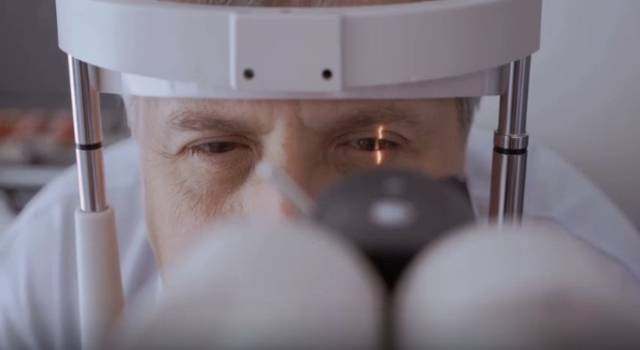Presbyopia is a condition that occurs as a person ages, which causes the lens of the eye to become less elastic. This results in issues with near vision for people 40 years old and over, which can cause difficulties with simple everyday tasks like reading, writing, or working on a computer.
Fortunately, your Plano eye care team at Lakeside Vision and Optical can easily diagnose presbyopia as part of a routine comprehensive eye exam. Once diagnosed, we can offer a number of treatment options to make sure you enjoy your best vision at all times.
Here are six of the most common treatments for presbyopia correction:
Bifocal and Progressive Lens Eyeglasses
Bifocal and progressive lens eyeglasses are far and away the simplest and most commonly prescribed treatment for presbyopia.
A bifocal lens offers two distinct sections in a single lens. The primary section helps correct for distance vision, while the secondary section, usually a much smaller section of the lens, allows for clear near-vision.
Progressive lenses function in a similar manner. However, instead of the distance and near vision sections being in distinct zones, they’re more blended. This offers a more seamless viewing experience, though it can sometimes take longer to get used to.
Contact Lenses
There are two common types of contact lenses when it comes to the treatment of presbyopia with contacts:
Monovision contact lenses come in different prescriptions for each eye; one eye is fitted with a lens for distance vision and one for near vision. This solution may not be for everyone, however, as it can sometimes take some time to get used to.
Multifocal contact lenses work in much the same way that multifocal eyeglasses do. They’re designed to offer clear vision across distance, moderate and near vision. They come in various types, including soft disposable, rigid gas permeable, and hybrid contact lenses.
Corneal Inlays
Corneal inlays are very small implantable lenses that your eye doctor surgically places in the cornea to address issues with presbyopia. There are a few different kinds of corneal inlays currently available. Each of these lenses works in a slightly different way:
Corneal inlays that rely on exploiting the pinhole effect are implanted in the non-dominant eye allowing the lens to extend the patient’s overall range of vision.
Corneal inlays that are made from biocompatible hydrogel are designed to imitate the cornea in your eye. This inlay treats presbyopia in the same way as multifocal contact lenses, changing the curvature of the eye, and altering the way light enters and is focused on the retina.
Monovision LASIK
Although traditional LASIK procedures don’t address presbyopia, certain variations can help reduce symptoms and minimize your reliance on bifocals or reading glasses.
Monovision LASIK is the most widely used surgical correction for presbyopia. It corrects the dominant eye so that you can see better at a distance while leaving the less-dominant eye nearsighted. This relies on the idea that the non-dominant eye is only mildly nearsighted, so it is still able to see things up close without the need for reading glasses.
Refractive Lens Exchange
For refractive lens exchange (RLE), an eye surgeon replaces your eye’s natural lens using an artificial intraocular lens (IOL). The IOL improves near vision and reduces your need for near vision solutions such as reading glasses. There are multiple strategies that can be employed to address your particular case, including different types of lenses in each eye. Speak to your eye doctor to find out what will work best for you.
Eye drops are among the newest solutions for the treatment of presbyopia and are most effective in patients who have just begun to experience symptoms. They are miotic drops, meaning they rely on making the pupil contract to create a “pinhole effect” that mimics the eye’s natural ability to focus. This allows for improved vision close-up in patients with presbyopia.
For more information on how we can help you see your best with presbyopia, contact our Plano eye care team at Lakeside Vision and Optical today!
Q&A
Are multifocal contact lenses difficult to get used to?
Some people will be able to adjust immediately to multifocal contacts, while others may take around a week to adjust. During the adjustment period, you may find that your distance vision is not as crisp as you like, and that you see shadows around some images up-close.
What is the pinhole effect?
The pinhole effect is a method of focusing your vision by causing the pupil to dilate or get smaller. This causes light that is scattered and unfocused to be able to enter your eye, leaving only focused light to enter and reach your retina. This results in sharper, more focused vision.


